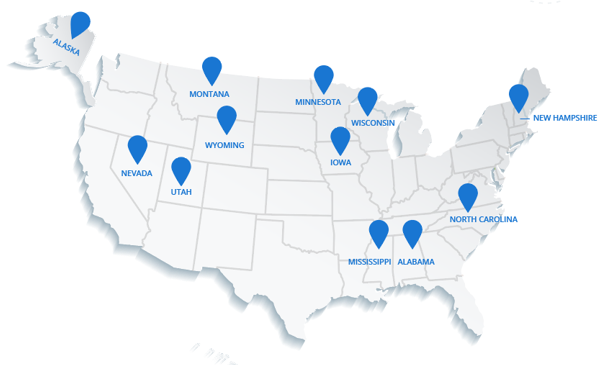This is a guest post by Paula Brooks, DNP, FNP-BC, MBA, RNFA. Dr. Brooks is Director of Advanced Practice for Advanced Practice Registered Nurses at Medical University of South Carolina in Charleston, SC.
I joined Medical University of South Carolina (MUSC) in 2016 as Director of Advanced Practice Nursing. Megan Fulton, Director of PA Practice joined MUSC around the same time. As co-directors, our role is to help bridge the gap between APPs and hospital leadership as well as to help standardize APRN and PA practice. We also promote and foster proper utilization and support of APPs in meeting the tripartite goals of MUSC education, research, and clinical care.
Two Advanced Practice Directors with a Shared Vision
From the start, Megan and I knew our APPs were a valuable investment that had not been fully realized by MUSC. We have over 90 PAs and 200 NPs in ambulatory and in-patient roles. They support efficiency, increase patient/provider face-to-face time, help to improve patient care, and improve life/work balance for physicians. APRNs and PAs also decrease provider burn out and can generate a high contribution margin. If utilized appropriately, APPs can bring up to 2.5 to 4 times their salary. Some research has shown that physician groups who employ APPs can have higher physician compensation (although many physicians are concerned that APPs can reduce profitability and compensation.)There are other benefits of APPs too, like increased access, reliable documentation, improved patient satisfaction, improved team satisfaction, and early discharges. All of these components contribute to increased workgroup productivity. When APP job satisfaction is increased, efficiency improves.
How MUSC Improved APP Efficiency and Increased Visibility
Considering the growth and consolidation of health care systems, we knew that APP productivity had to be quantified in terms of a financial return on investment. If the APPs work continued to be invisible under physician billing numbers, we couldn,t achieve staffing models that aligned with patient access and quality needs. We first met with the physician and administrative leaders of each department. These leaders discussed how they believed utilization of APPs occurred in their area and gave us a vision for the future of their departments. After the leader meeting, we met with each APP for individual interviews to explore their day-to-day function on the medical team. Recommendations were made and reviewed by an APP sub-committee which we then presented to senior leadership. Once recommendations were reviewed at the executive level, the APP Directors reported back to the department physician and administrative leaders. Through the consult service, we identified many ways departments were utilizing the APPs and offered guidance for utilization improvement through but not limited to outpatient clinic re-design, nursing support, administrative scheduling of patient appointments, scheduling of APP provider staff, and billing practices between the APP and Physician.
The Solution: A Simplified APP Billing Algorithm
In our research, we identified several significant barriers to APP productivity. First, APPs were working as medical scribes and taking on responsibilities that should have been delegated to other team members. Additionally, APP financial dashboards did not reflect accurate productivity because they were billing under the physician and there was no avenue to accurately capture the APP,s performance. Adding to these difficulties, we uncovered 16 possible ways for an APP to close a patient encounter. Different departments had different scenarios for billing practice. Not only did this cause inefficiency and lost productivity, it also created problems with documentation that could lead to compliance issues. As co-directors, Megan and I organized a multidisciplinary team representing compliance, finance, EMR, and Patient Access to come up with a solution. Our objective was to find a way for APPs to bill independently. We believed APPs would practice more efficiently, be financially sound, and also increase patient and physician satisfaction. Our approach was threefold:
- Rebuild APP financial dashboard and reporting in EMR
- Reduce APPs working as medical scribes, mitigate compliance issues, lower risk to MDs, and reduce patient confusion due to billing
- Recreate a standardized billing algorithm
We knew this could work because there were groups of APPs within the organization who were profitably billing independently. We studied the contribution margins and determined independent billing could be profitable even when APPs were reimbursed at 85% of the physician rate. In one case, we calculated that an APP could earn $422/day more than a physician in a full day of clinic. As a team, we proposed a standardized billing algorithm and consolidated it into 1 page, rather than the previous 13-page document. According to the new algorithm, if the APP sees a patient independently, they bill independently. If the physician sees the patient with the APP and documents part of the physical exam or the face-to-face decision-making, then it is considered a shared visit. We implemented this across the organization, not taking insurance into consideration but rather following Medicare shared guidelines for all patient encounters. This included the APP billing independently if the physician did not perform any part of the examination or medical decision-making but did engage with the patient or collaborate with the APP on the care of the patient.
Uncovering and Measuring the True Value of APPs at MUSC
Prior to implementation, our algorithm was tested with 1 APP in a specialty area who was billing primarily under the physician. After implementing the new algorithm, her monthly RVUs jumped from 24 to 167 and collections increased using the new model. After successful implementation organization-wide, APP RVUs increased across the board. We anticipated these findings because our APPs were previously billing under the physicians and not being recognized as performing providers. It was important to us to transparently report the new data. We developed an APP financial dashboard that was individualized to each APP. It tracked RVUs (both independent and shared), patient access, and patient experience. None of these data points was accurately tracked prior to the new algorithm.
Key Learnings for Other Organizations on Standardized Billing
It is imperative for any health care system to standardize billing practices for APPs. This ensures that all the services provided by APPs are attributed to the correct provider. The plan should include developing a task force with APP representation, compliance, EMR, and business analytics to help build these algorithms and dashboards. Each healthcare system has their own EMR, but the concepts behind the standardized algorithm and financial dashboard can be applied anywhere. CMS guidelines must also be followed. It is essential that the billing data is reflective of APP independent versus shared visit encounters with the attending physician. Shared visit encounters should attribute the APP as the performing provider and attending physician as the billing provider. The algorithm also must outline proper supporting documentation to be completed by the attending physician, take into consideration state laws for both NPs and PAs, and include any bylaw signature requirements. Based on our experience, I recommend that other Advanced Practice Directors obtain buy-in from senior leadership and plan your educational rollout so it communicates to all stakeholder groups. Your APPs and physicians need to understand the why before the what. Also, review your data after implementation to ensure that you are capturing an increase in RVUs and collections. Monthly compliance audits are necessary to ensure proper use of the algorithm. It is necessary to continuously review the steps to refine and simplify the algorithm to reduce provider error.
Further Reading
Paula Brooks and Megan Fulton, MSPAS, PA-C were recently dually published in the Journal of the American Association of Nurse Practitioners (JAANP) and the Journal of the American Academy of PAs (JAAPA). Their article, titled "Demonstrating Advanced Practice Provider Value: Implementing a new advanced practice provider billing algorithm," outlines their efforts to implement a simplified APP billing algorithm at Medical University of South Carolina (MUSC) from May 2016 to July 2017.
This article was originally published on Melnic. It was recently acquired by DirectShifts.
If you,re looking to make a career change, we,d love to help you. Review our current job opportunities below and create your free DirectShifts Profile.
September 26, 2022




Comments